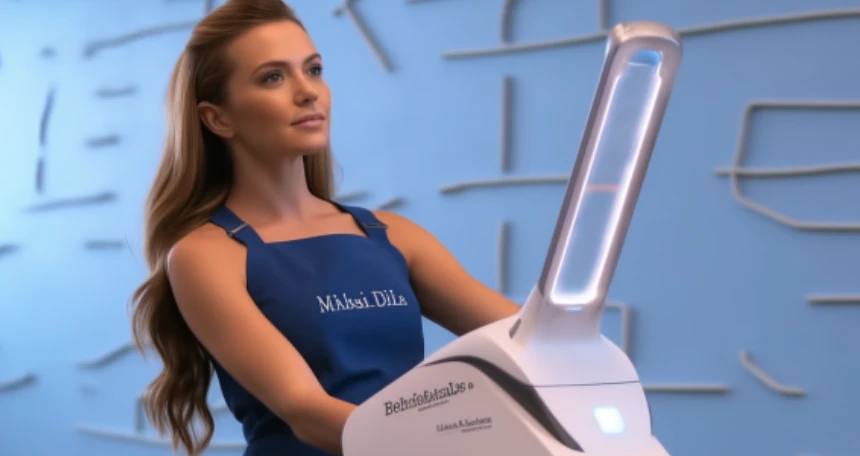CO2RE Resurfacing Laser is a popular cosmetic procedure that uses fractional carbon dioxide (CO2) laser technology to improve various skin conditions, including wrinkles, scars, and age spots. If you're considering this treatment, it's important to understand its pros and cons to make an informed decision. In this article, we'll explore ten key points about CO2RE Resurfacing Laser, providing you with valuable insights into its benefits, drawbacks, and frequently asked questions.

1. What is CO2RE Resurfacing Laser?
CO2RE Resurfacing Laser is a non-invasive cosmetic procedure that uses beams of fractionated CO2 laser energy to create tiny, controlled injuries in the skin. This process stimulates collagen production, leading to smoother, healthier-looking skin. It can target specific areas or the entire face, depending on the desired results.
2. The Pros of CO2RE Resurfacing Laser
2.1 Effective and Versatile Treatment
CO2RE Resurfacing Laser has been proven effective in reducing wrinkles, acne scars, sun damage, and other skin imperfections. It can be customized to address specific concerns, making it suitable for various individuals and skin types.
2.2 Long-lasting Results
Unlike other treatments that provide temporary improvements, CO2RE Resurfacing Laser stimulates collagen remodeling, which leads to long-lasting results. It can significantly improve the overall texture and tone of the skin for years, making it a cost-effective option in the long run.
2.3 Minimal Downtime
Compared to traditional ablative laser treatments, CO2RE Resurfacing Laser requires less downtime for recovery. Most patients experience mild redness and swelling for a few days, but they can usually resume their regular activities within a week.
2.4 Targeted Treatment Area
CO2RE Resurfacing Laser can be used to treat specific areas, allowing individuals to address localized concerns without undergoing full face treatment. This flexibility makes it suitable for those who wish to target specific problem areas.
3. The Cons of CO2RE Resurfacing Laser
3.1 Potential Side Effects
While CO2RE Resurfacing Laser is generally safe, there is a risk of side effects such as redness, swelling, and temporary changes in pigmentation. These effects are usually temporary and resolve within a few weeks, but it's important to discuss potential risks with a qualified practitioner.
3.2 The Need for Multiple Sessions
Depending on the severity of the skin condition being treated, multiple sessions of CO2RE Resurfacing Laser may be required to achieve the desired results. This can increase the overall cost and time commitment involved.
3.3 Temporary Sensitivity and Discomfort
During the procedure, patients may experience a mildly uncomfortable sensation similar to a rubber band snap. Following the treatment, the skin may feel sensitive for a few days, and a gentle skincare regimen may need to be followed.
3.4 Not Suitable for All Skin Types
CO2RE Resurfacing Laser may not be suitable for individuals with darker skin tones, as it can increase the risk of pigmentation changes or uneven skin tone. It's important to consult with a qualified practitioner to determine if this treatment is appropriate for your skin type.
4. Frequently Asked Questions (FAQ)
4.1 How long does the CO2RE Resurfacing Laser procedure take?
The length of the procedure can vary depending on the size of the treatment area and the extent of the skin condition being addressed. On average, a session can take anywhere from 30 minutes to two hours.
4.2 What can I expect during the recovery period?
During the recovery period, it's common to experience redness, swelling, and peeling. These effects typically subside within a week or two. Your practitioner will provide detailed aftercare instructions to ensure proper healing.
4.3 How soon will I see results?
Results from CO2RE Resurfacing Laser can be visible after a few weeks, as collagen remodeling takes time. However, optimal results are typically achieved within three to six months after the last treatment session.
4.4 Can CO2RE Resurfacing Laser be combined with other treatments?
CO2RE Resurfacing Laser can be combined with other treatments such as dermal fillers or Botox to further enhance the overall results. Your practitioner will assess your specific needs and recommend a personalized treatment plan.
4.5 How do I choose a qualified practitioner?
When considering CO2RE Resurfacing Laser or any cosmetic procedure, it's important to choose a qualified and experienced practitioner. Look for board-certified dermatologists or plastic surgeons who specialize in laser resurfacing and have a proven track record of successful outcomes.
In conclusion, CO2RE Resurfacing Laser is an effective and versatile cosmetic procedure that offers long-lasting results. It has the potential to address various skin concerns, but it's essential to consider the potential side effects, multiple sessions, and suitability for your skin type. By understanding the pros and cons, as well as the frequently asked questions, you can make an informed decision and discuss your options with a qualified practitioner.



